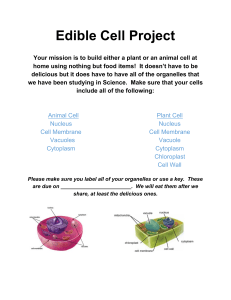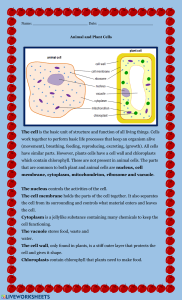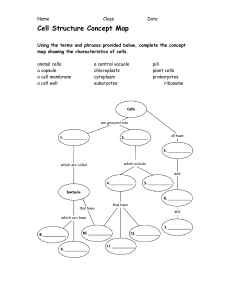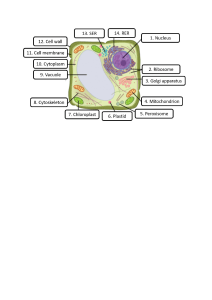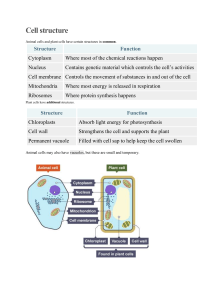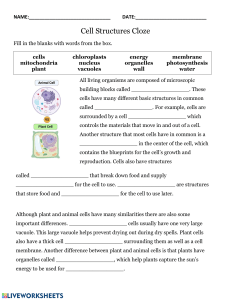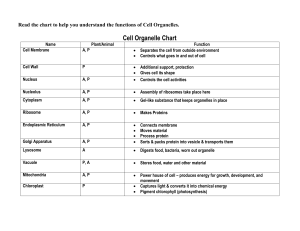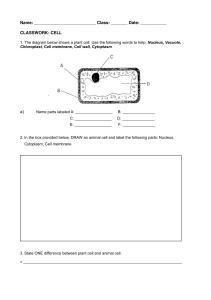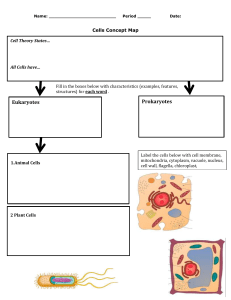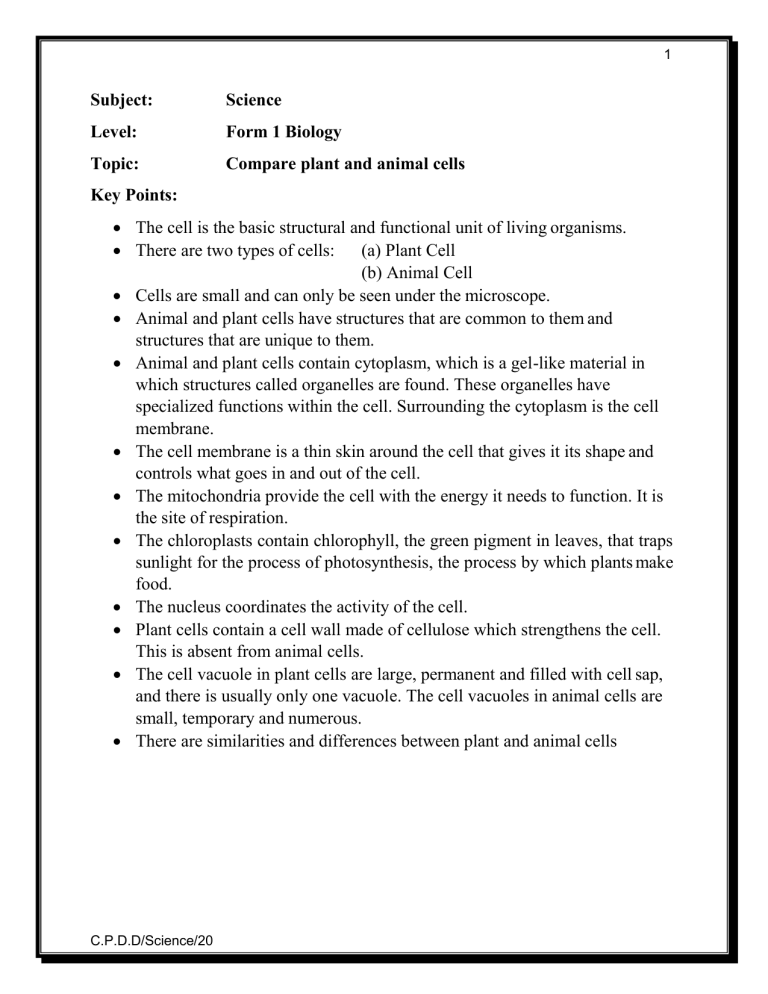
1 Subject: Science Level: Form 1 Biology Topic: Compare plant and animal cells Key Points: The cell is the basic structural and functional unit of living organisms. There are two types of cells: (a) Plant Cell (b) Animal Cell Cells are small and can only be seen under the microscope. Animal and plant cells have structures that are common to them and structures that are unique to them. Animal and plant cells contain cytoplasm, which is a gel-like material in which structures called organelles are found. These organelles have specialized functions within the cell. Surrounding the cytoplasm is the cell membrane. The cell membrane is a thin skin around the cell that gives it its shape and controls what goes in and out of the cell. The mitochondria provide the cell with the energy it needs to function. It is the site of respiration. The chloroplasts contain chlorophyll, the green pigment in leaves, that traps sunlight for the process of photosynthesis, the process by which plants make food. The nucleus coordinates the activity of the cell. Plant cells contain a cell wall made of cellulose which strengthens the cell. This is absent from animal cells. The cell vacuole in plant cells are large, permanent and filled with cell sap, and there is usually only one vacuole. The cell vacuoles in animal cells are small, temporary and numerous. There are similarities and differences between plant and animal cells C.P.D.D/Science/20 20 2 Diagram of a Plant Cell Diagram of an Animal Cell C.P.D.D/Science/20 20 3 C.P.D.D/Science/20 20
